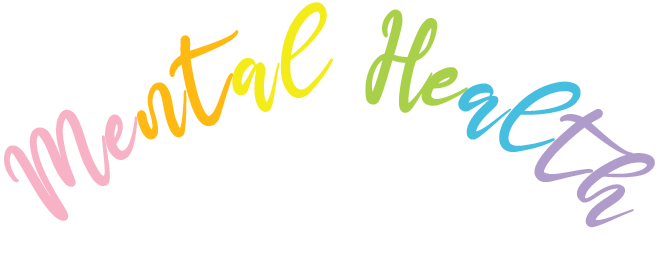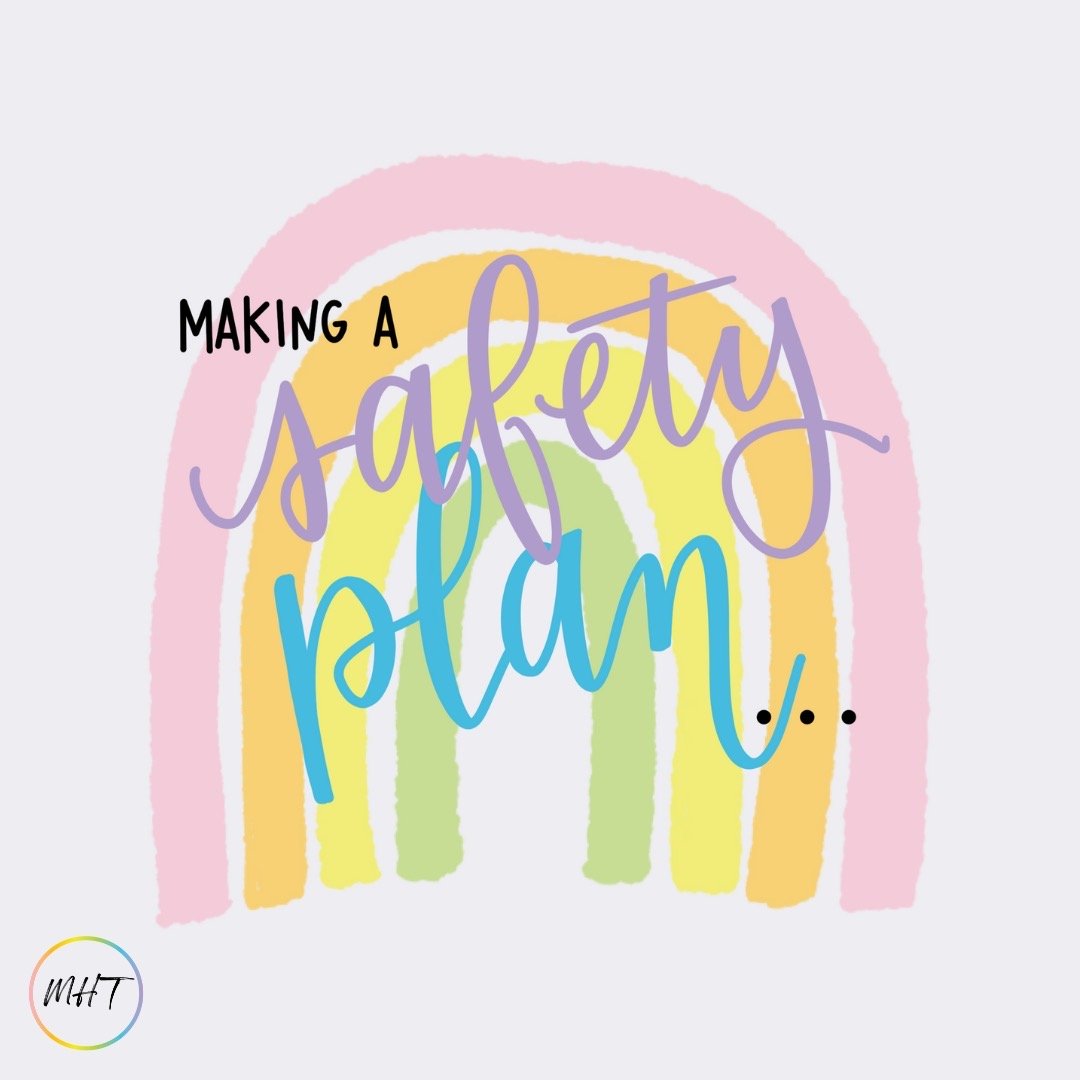Making A Safety Plan
Every new therapist or psychiatrist whose practice I visit, makes me do the same thing in our first session— make a safety plan.
The safety plan is a document that lists the different methods you’ll try if you’re ever in a mental health crisis or feeling suicidal. Over and over again, I lie to these professionals and tell them I’ll call the suicide hotline when I’m in crisis, because there isn’t much else that they want to hear. The document is either then printed out for me to throw away, or kept in their digital files where it will remain unhelpful for me in times of crisis.
Thank you to Anna Hall for making this graphic.
I don’t tend to think of calling people in my times of crisis and only recently have I been getting better at letting people in and relying on them for help in my most vulnerable moments. The other day I went to get food and the restaurant was closed, which sent me into a spiral. I decided to go to a friend's house and wait with her until my family would be back because I didn’t want to be by myself. She talked to me about what was wrong and I explained how I’d been having a string of bad days and that just seemed like the last thing I could take. I’ve learned that having someone just listen to me, without judgment or unsolicited advice, can be a game changer and a life saver. (Qualities of a good listener, they listen without judgment, are not waiting for their turn to talk, don’t offer advice unless you ask. This is important because sometimes you just want to be HEARD; you just want to vent.)
It takes extraordinary amounts of bravery to reach out to people and I often find myself unable to do so (a huge factor into this, is the fact that I don’t want to worry or burden anyone.) I hadn’t thought about updating my safety plan or including anyone in my life in the plan until the day my boyfriend approached me about having a safety plan— something he learned about in a seminar for loved ones of people with Borderline Personality Disorder. I confessed I don’t actually have one and we decided to make one together in a google doc that we share.
There are so many two dimensional safety document templates available online, but I’m going to share what worked for us.
The first thing we did in crafting this document was to identify my triggers (e.g. financial instability, life events, stress, etc.). Additionally, I listed specific things that he might do that would cause me to spiral, things that he might not realize could potentially cause a meltdown because they are specific to me. There’s a lot of discourse on Twitter pertaining to partners not responding to text messages that many people think is no big deal. But if your partner not texting you back within a certain amount of time is a potential trigger for you, then it’s important to let them know so they can let you know when they’re going to be unable to respond quickly. Good communication is key, and it is a skill that can be cultivated.
The second thing we did in crafting this document was to list behaviors of mine that would help my boyfriend to identify my triggers. For example, if I start ignoring him or trying to be mean it’s usually because I’m very upset by something he may not have noticed and I want him to know something is wrong. Listing these out are important because oftentimes people (especially when they are still getting to know you) are not often aware of others' tells. And this way, it takes the burden off the person in crisis from having to explicitly state they are in crisis before receiving support.
The third thing we did was to include a list of activities I like to do to self soothe. A huge list of activities can be found in another post I made on distress tolerance. I invited my partner into the discussion by telling him that if he was too busy to be fully present with me in crisis, that he could text me to complete one of the coping mechanisms and check back in in a timely manner to see if I had completed the activity or at the very least started it. That way I have someone holding me accountable in my attempt to self-soothe.
If he did have time to FaceTime me and help me work through a downward spiral, we had a paragraph for talking points and activities to help me achieve a more even temperament.
For things like anxiety attacks, I suggested he could help me problem-solve. When I’m worried, he reminds me that I am more capable of dealing with difficult situations than I think I am. If I am overwhelmed about the work I have to get done, I suggested he virtually “body double” for me to help complete activities. This could be as simple as being on FaceTime in the background while I clean my room, or joining my google doc and checking in to make sure I’m writing.
For times where I’m dealing with depression I suggested he lovingly challenge my thought processes and any cognitive distortions that may arise. For example if I stated that nobody loves me he could counter that with, “that’s not necessarily true because I love you and your family loves you.” This gives us the opportunity to explore more deeply together and answer questions such as, “Why is it that I feel nobody loves me?” and, “What needs do I need to have met so that I can feel more deeply loved?”
Lastly, the most helpful method that works for me is visualizing aloud about ways the future might get better from here. This could be pure imagination, or based in reality. Ask yourself the following prompts:
Think about what your life will be like in five years when this is behind you (imagination)
Think about an exciting plan you have coming up soon and how much fun it will be to experience that moment (reality)
Our relationship is still long distance, so the document contains phone numbers of people to call that live in close proximity to me, who can be present with me if I did indicate that I was severely in danger of hurting myself.
There you have it, a much more comprehensive guide to forming a safety plan that I am much more likely to use and follow in times of crisis. The best part of doing something like this with a partner or a trusted friend is knowing that the person you chose cares so much more about you than a clinician who is meeting you for the first time.
S/O to JJ Melón for editing.
I made a template based off of my own personal safety plan for others to use. If you need additional guidance, you can copy it for free and fill it out for yourself.
To support this blog and make a one time donation toward the cost of our domain and paying guest bloggers, you can partner with us buying visiting our buy me a coffee page.
You can also make a recurring monthly donation by signing up for our Here for the Blog $10 a month Patreon tier.


